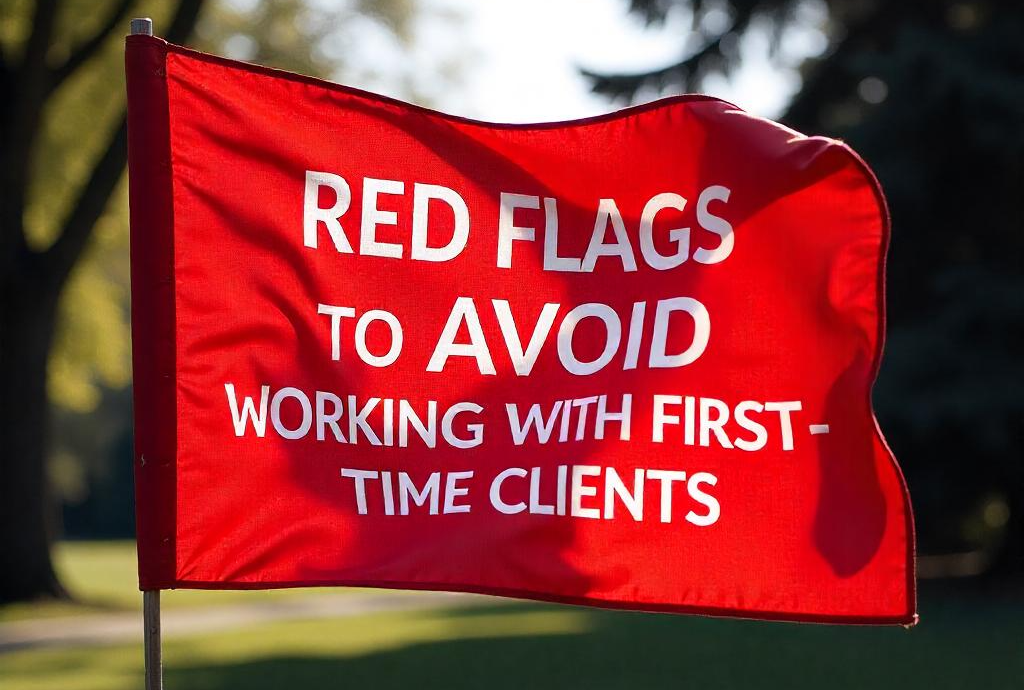Red Flags to Avoid When Working with First-Time Clients
Red Flags to Avoid When Working with First-Time Clients
Introduction: Why Spotting Red Flags is Crucial for Freelancers
Freelancers often experience excitement when working with new clients, especially when the project seems promising. However, not all new opportunities are as good as they appear. For every great client, there’s one who could turn out to be a nightmare.
In fact, working with first-time clients comes with risks. As a freelancer, it’s essential to learn how to spot red flags early in the process to avoid problems down the line. By recognizing these signs, you can protect yourself and ensure your freelance business thrives.
In this blog, we’ll walk you through the red flags to avoid when working with first-time clients and how to handle them with professionalism.
1. Unclear Project Scope
A major red flag when working with first-time clients is a lack of clarity about the project scope. If a client is unable to provide clear details about the deliverables, deadlines, and expectations, it’s a warning sign.
When a client can’t define what they want, it often leads to scope creep, where the project gradually grows beyond what was agreed upon without additional compensation.
What to Do:
- Always have a clear contract outlining the project scope, deadlines, and payment terms.
- Set expectations from the beginning by communicating deliverables, milestones, and timelines.
- If the scope is unclear, ask specific questions to gather the necessary details before proceeding.
2. Consistently Delayed Responses
When a first-time client takes too long to respond to emails, messages, or other communications, it could signal trouble. While everyone has a busy schedule, constant delays in communication can lead to missed deadlines, misunderstandings, and frustration on both sides.
What to Do:
- Set clear communication timelines and ask for a commitment to respond within a certain time frame.
- If delays happen frequently, consider whether this is a sign of disorganization or lack of commitment.
- If communication problems persist, consider parting ways before the project starts or is further delayed.
3. Unrealistic Expectations
First-time clients might have unrealistic expectations regarding the timeline, quality, or budget of the project. They may demand high-end work on a tight budget or expect results overnight.
This is a common issue that often leads to frustration on both sides.
What to Do:
- Set clear boundaries by establishing realistic goals for the project.
- Be honest about what’s achievable within the proposed budget and timeline.
- Educate the client about the process, how long tasks take, and the quality they can expect at each level.
4. Failure to Provide References or Portfolio Samples
If a client is reluctant to provide any references or examples of previous work, it could be a red flag. A lack of transparency or refusal to share information might suggest they are not as professional as they claim.
What to Do:
- Politely ask for references, portfolio samples, or examples of past work to gauge their credibility.
- Trust your instincts: if a client seems hesitant or avoids providing any information, it may be best to walk away.
- You can also check their social media presence, website, or other platforms for credibility.
5. Unrealistic Payment Terms
Another red flag is when a client insists on unfavorable payment terms, such as delaying payments, offering exposure instead of monetary compensation, or setting unclear payment schedules. This can lead to significant financial issues down the line.
What to Do:
- Always discuss payment terms upfront before starting any work.
- Use a contract that clearly states the payment terms (e.g., upfront deposits, milestones, and final payment).
- If a client refuses to pay a fair amount or delays payments excessively, consider finding another opportunity.
6. A History of Complaints or Negative Reviews
If a first-time client has a history of complaints or negative reviews from other freelancers or contractors, it’s essential to pay attention. A client who has mistreated others in the past may do the same to you.
What to Do:
- Research the client’s reputation online. Look for any red flags in reviews or testimonials.
- If you find multiple complaints about poor behavior, consider whether it’s worth working with them.
- Trust your gut feeling: if something feels off, don’t be afraid to decline the project.
7. Lack of a Contract or Agreement
Freelance contracts are your protection. If a first-time client avoids signing a contract or pushes you to work without one, it’s a big red flag. A contract ensures both parties are on the same page regarding expectations, deadlines, payment, and legal matters.
What to Do:
- Never start any work without a formal agreement or contract in place.
- Use a detailed contract that includes all terms of the project.
- Ensure the client understands the importance of the contract and is willing to commit to the terms.
Conclusion: Protect Yourself and Your Business
Working with first-time clients can be rewarding, but it’s essential to recognize red flags early on to protect yourself and your business. By staying vigilant and setting clear boundaries from the beginning, you can avoid misunderstandings and ensure that the relationship remains positive and professional.
When you spot these red flags, trust your instincts. Take the necessary steps to either address the issue or walk away from the project if it’s not a good fit. Always prioritize your well-being and business success.
Related Posts:






